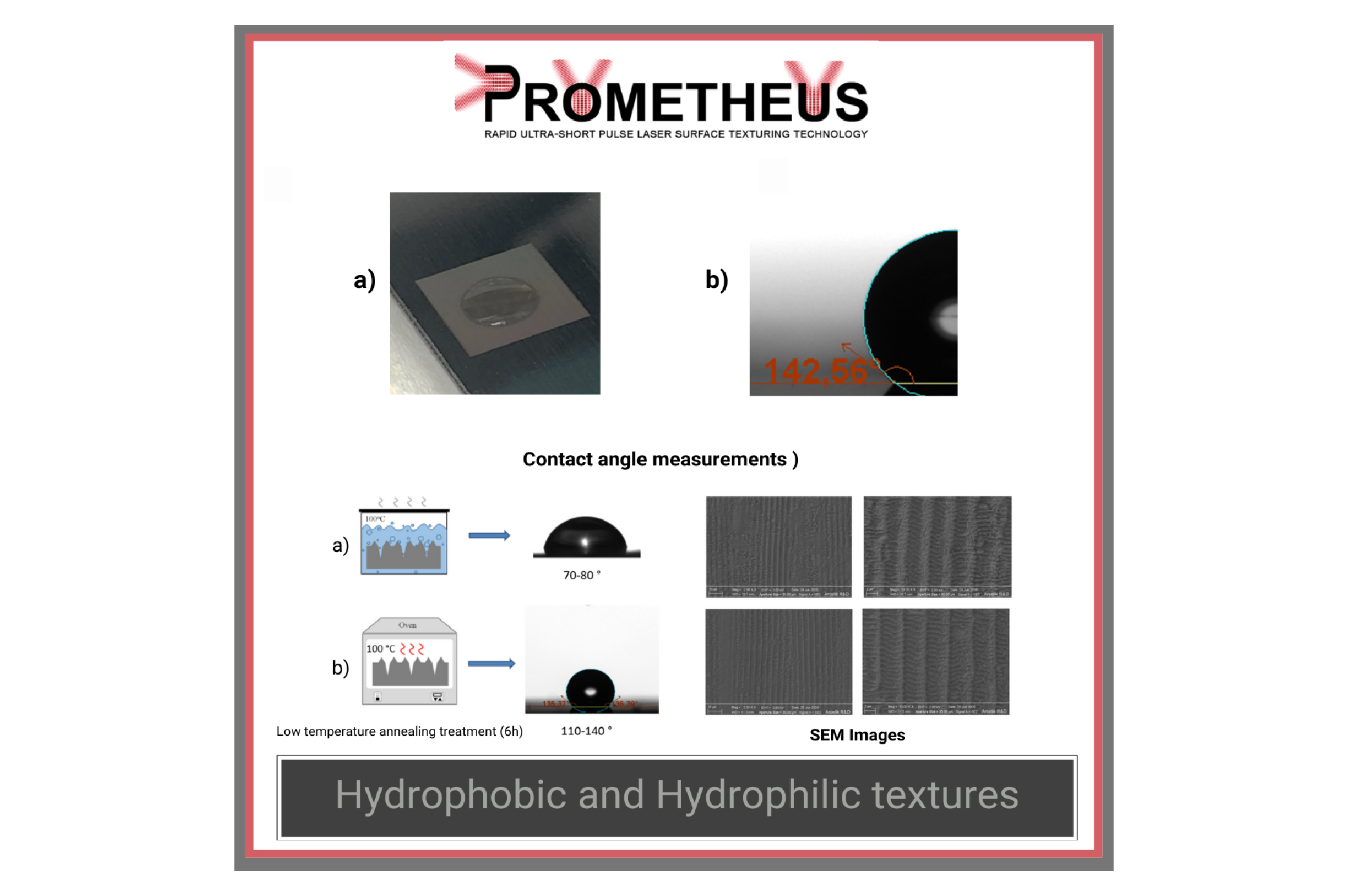News / Project Newsletter
Hydrophobic and Hydrophilic textures
With the assistance of the DLIP technology, it is possible to easily process surface to generate periodic patterns such as line/groov.

-
▪ Progress until now: With the assistance of the DLIP technology, it is possible to easily process
surface to generate periodic patterns such as line/groove, which, once optimized, produce hydrophobic or
hydrophilic texture. This property of the periodic pattern is well documented in the literature, however
in reality, the optimal recipe is not as straightforward as it seems.
Indeed, when texturizing with DLIP, the laser interacts with the surface and can cause a localized
chemical change on the surface, such as ionization, oxidation, etc. This means that even if the geometry
is optimal, due to chemical changes, the hydrophobic or hydrophilic properties can change. Additionally,
this chemistry tends to change with time/external condition, leading to changes in the properties.
Therefore, the laser pulse intensity and overlap need to be carefully studied.
In PROMETHEUS, those properties have been extensively studied, and we can say that, for our laser/DLIP setup, various recipes give similar geometries, but some present better results than others. In addition, some sample will see their hydrophobicity reduce in time, making them not suitable for industrial application. Based on those results, the process were carefully optimized, both regarding the DLIP/laser recipe, but also the post-processing treatment. With our experience in the PROMETHEUS, we therefore successfully optimized the process and the post-process treatment, to get sufaces that present good and stable hydrophibic and hydrophilic surface, with the goal to be implemented in the industry and to have a positive impact on things like energy consumption, water consumption, and self-cleaning properties. - ▪ Next Steps: As the final PROMETHEUS setup will be used on various untested material and with a newly and more powerful laser, the optimization process will need to be redo for the final prototype and sample. This process will be standardized, with comparable KPIs and metrics, allowing for its application to any new process/material.
